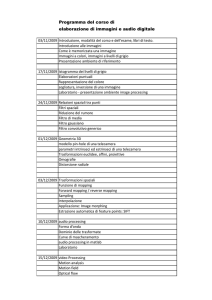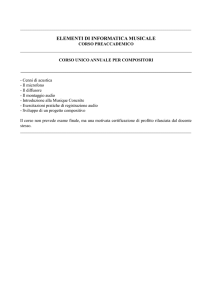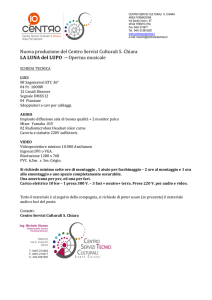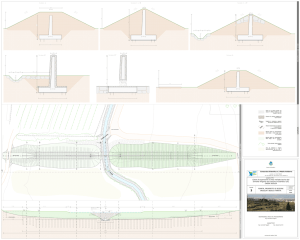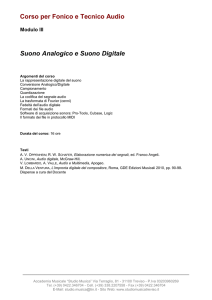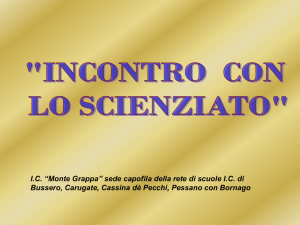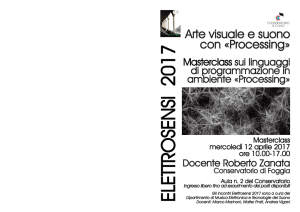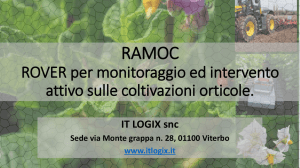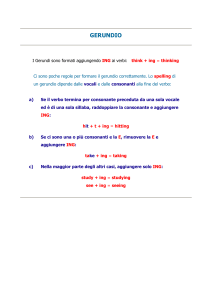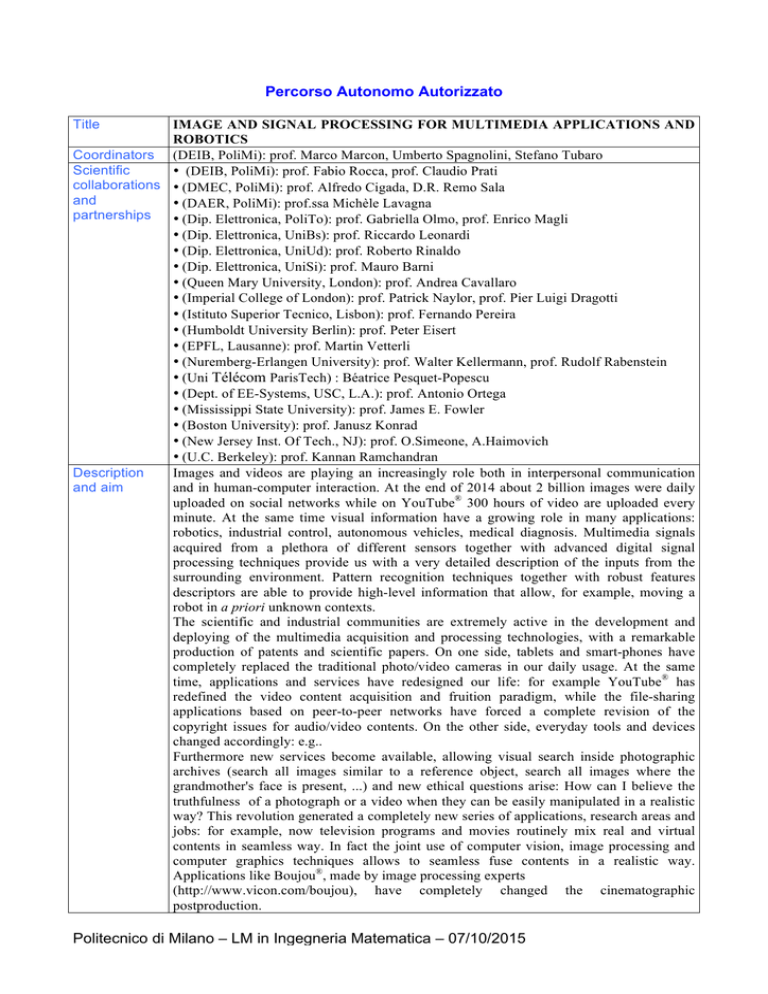
Percorso Autonomo Autorizzato
Title
IMAGE AND SIGNAL PROCESSING FOR MULTIMEDIA APPLICATIONS AND
ROBOTICS
Coordinators (DEIB, PoliMi): prof. Marco Marcon, Umberto Spagnolini, Stefano Tubaro
Scientific
• (DEIB, PoliMi): prof. Fabio Rocca, prof. Claudio Prati
collaborations • (DMEC, PoliMi): prof. Alfredo Cigada, D.R. Remo Sala
and
• (DAER, PoliMi): prof.ssa Michèle Lavagna
partnerships
• (Dip. Elettronica, PoliTo): prof. Gabriella Olmo, prof. Enrico Magli
• (Dip. Elettronica, UniBs): prof. Riccardo Leonardi
• (Dip. Elettronica, UniUd): prof. Roberto Rinaldo
• (Dip. Elettronica, UniSi): prof. Mauro Barni
• (Queen Mary University, London): prof. Andrea Cavallaro
• (Imperial College of London): prof. Patrick Naylor, prof. Pier Luigi Dragotti
• (Istituto Superior Tecnico, Lisbon): prof. Fernando Pereira
• (Humboldt University Berlin): prof. Peter Eisert
• (EPFL, Lausanne): prof. Martin Vetterli
• (Nuremberg-Erlangen University): prof. Walter Kellermann, prof. Rudolf Rabenstein
• (Uni Télécom ParisTech) : Béatrice Pesquet-Popescu
• (Dept. of EE-Systems, USC, L.A.): prof. Antonio Ortega
• (Mississippi State University): prof. James E. Fowler
• (Boston University): prof. Janusz Konrad
• (New Jersey Inst. Of Tech., NJ): prof. O.Simeone, A.Haimovich
• (U.C. Berkeley): prof. Kannan Ramchandran
Description
Images and videos are playing an increasingly role both in interpersonal communication
and aim
and in human-computer interaction. At the end of 2014 about 2 billion images were daily
uploaded on social networks while on YouTube® 300 hours of video are uploaded every
minute. At the same time visual information have a growing role in many applications:
robotics, industrial control, autonomous vehicles, medical diagnosis. Multimedia signals
acquired from a plethora of different sensors together with advanced digital signal
processing techniques provide us with a very detailed description of the inputs from the
surrounding environment. Pattern recognition techniques together with robust features
descriptors are able to provide high-level information that allow, for example, moving a
robot in a priori unknown contexts.
The scientific and industrial communities are extremely active in the development and
deploying of the multimedia acquisition and processing technologies, with a remarkable
production of patents and scientific papers. On one side, tablets and smart-phones have
completely replaced the traditional photo/video cameras in our daily usage. At the same
time, applications and services have redesigned our life: for example YouTube® has
redefined the video content acquisition and fruition paradigm, while the file-sharing
applications based on peer-to-peer networks have forced a complete revision of the
copyright issues for audio/video contents. On the other side, everyday tools and devices
changed accordingly: e.g..
Furthermore new services become available, allowing visual search inside photographic
archives (search all images similar to a reference object, search all images where the
grandmother's face is present, ...) and new ethical questions arise: How can I believe the
truthfulness of a photograph or a video when they can be easily manipulated in a realistic
way? This revolution generated a completely new series of applications, research areas and
jobs: for example, now television programs and movies routinely mix real and virtual
contents in seamless way. In fact the joint use of computer vision, image processing and
computer graphics techniques allows to seamless fuse contents in a realistic way.
Applications like Boujou®, made by image processing experts
(http://www.vicon.com/boujou), have completely changed the cinematographic
postproduction.
Politecnico di Milano – LM in Ingegneria Matematica – 07/10/2015
Study Plan
Past MSc
theses
Another kind of application field like "motion capture", which capture the movements
through the combined use of multiple cameras, built the basis of modern medical
rehabilitation techniques and animation of virtual actors. The visualization of 3D data and
virtual real time interaction is becoming more and more interactive thanks to modern
computer graphics techniques increasingly immersive experience between the user and the
3D digital environment.
In Industrial Quality Inspection, vision systems are continuously increasing their relevance
assessing, with sophisticated techniques, the quality of each individual product: the analysis
of images acquired along the production chain allows, for example, to discard defective
pieces and to optimize robot actions. Compliance with the quality requirements of
banknotes, tiles, fabrics, but also fruits or meat portions are nowadays is entrusted to vision
systems and statistical image processing techniques. Automatic (or assisted) driving
systems for vehicles massively use information obtained the processing of images captured
by multiple cameras placed on the vehicles.
Also in gaming applications, image processing and computer graphics techniques are
expanding their role: the Microsoft Kinect® system, for example, offers the players a full
interactive interface without any joystick or wired device. It is based on 3D cameras for
automatic gesture recognition of every player and accurate avatars and virtual
environments are reconstructed thanks to fast computer graphics algorithms implemented
in GPUs.
Satellites or subsurface images represent further application domains where microwave
antennas on a satellite or seismic sensors collects data arranged in multidimensional arrays.
Then image processing techniques coupled to complex wave propagation models are able
to create images that describe with millimeter accuracy the earth surface or its interior.
A similar evolution occurs in the audio field, where audio signal processing is deeply
changing our interaction with mobile devices (smartphones, tablets). For example, a series
of applications is now providing a natural language interaction with these devices (e.g.
SIRI on IOS platform, or "Google Now"), and novel applications are coming out inferring
the user's mood by voice and movement, or their musical preferences from the content of
his/her archives.
Nowadays there are also of-the-shelf devices able to localize the speaker in a 3D
environment and to focus on his voice to better recognize and interpret what he is saying. A
particularly promising area of audio signal processing is based on music information
retrieval, where statistical techniques are able to extract descriptors at different levels of
abstraction (semantics), assisting the listener to browse the huge amount of music contents
available on the net. Some products are already available for generating custom audio
streams (eg. StereoMood, Lastfm, Spotify).
As a last remark, it must be underlined that music and video production areas are
increasingly involving people with both artistic skills and deep knowledge on signal
processing.
The programme of studies belongs to the Major in “Applied Statistics” with additional
courses in image and video processing. The list of courses can be found in a separate
document.
• L. Bonacina (Ing. Inf.), 3D Models Extraction For Personalized Binaural Audio
Applications, 2015
• A. Camarda (Ing. Inf.), Scene Classification for Mountain Landscape Recognition from
User Generated Images, 2014
• M. Paracchini (Ing. Mtm.), Localizzazione Robusta dei Punti Salienti del Volto Tramite
un Approccio a Regolarizzazione Globale, 2014
• L. Gaborini (Ing. Mtm.), Image tampering detection and localization, 2014
• F. Raimondi (Ing. Mtm), Signal processing for passive seismic and application to
Argentière glacier, 2014
• P.F. Piazza (Ing. Mtm.), Analisi congiunta di flussi audio-video per l’estrazione di
informazioni sulla volumetria delle scene riprese, 2013
• A. Bolognino (Ing.Tlc), Consensus-based inference methods and cooperative wireless
Politecnico di Milano – LM in Ingegneria Matematica – 07/10/2015
networks, 2013
• G. Soatti (Ing.Tlc), Distributed estimation of multi-link channel in dense cooperative
networks, 2013
• G. Sandrini (Ing. Mtm.), Acoustic Imaging in the Ray Space: Application to Environment
Inference, 2012
• S. Battaglia, (Ing. Inf.), Individuazione della moto-interpolazione in sequenze video, 2012
• A. Panichella (Ing. Inf.), Identificazione del cambio di bitrate attraverso modelli di stima
della qualità in modalità no-reference, 2012
• D. Totaro (Ing. Inf.), Example-base definition of high-level descriptors of musical
excerpts, 2012
• D. Rodriguez Salgado (Ing. Inf.), Music recommendation system based on audio
segmentation and feature evolution, 2012
• L. Chiarandini (Ing. Tlc.), Automatic audio compositing system based on music
information retrieval, 2012
Available
• Compressed sensing and sparse recovery
subjects for
• Statistical signal processing over sparse geometric graphs
an MSc thesis • Video tampering detection through compression history analysis, estrazione di parametri
di compressione dal bitstream per cercare tracce di compressione multipla
• Video tampering detection exploiting steganalitic methods, applicazione di metodi di
steganalisi per la detection di modifiche video
• Video splicing detection and localization using no reference quality metrics, uso di
statistico di metriche no-reference nell’analisi video per riconoscere manipolazioni
• Who's best? Image/video quality comparison, ordinare sequenze video o immagini in
base alla loro qualità (blurring, logo insertion, crop, etc.)
• Odometria visuale e ricostruzione di scena 3D da singola telecamera in moto
• Stima diretta delle mappe di visibilità acustica basata su analisi di segnali audio acquisiti
con schiere di microfoni
• Co-registration and calibration of a low-res 3D ToF camera with a Hi-Res camera
• Graph analysis for deformable meshes in space
• Feature-based on-the-fly genre classification of audio streams
• Non-invasive affective browsing of audio content
• Ottimizzazione delle sensitività spettrali in sensori CMOS multi-canale per imaging
multi-banda
• Sensori d'immagine CMOS filterless in tecnologia backside
• Sensori RGB/IR per rivelazione di immagini 3D
• Sensori riconfigurabili ad elevato range dinamico per acquisizione di immagini a colori
in condizioni di illuminazione fortemente variabili
• Simulazione microelettronica di sensori sensibili al colore basati sulla diffusione
• Relazione tra sharpening dei filtri e progetto delle microlenti in sensori sensibili al colore
• Studio ed ottimizzazione della intersezione tra lo spazio cromatico visibile e quello di un
sensore di acquisizione di immagini con filtri accordabili
Industrial
On students’ demand it is possible to activate internships with Italian or foreign companies.
internships
Work
The proposed study plan offers a specific and highly qualified education in multimedia
opportunities contents acquisition, processing and broadcasting. After achieving the MSc many working
opportunities will be available both in Italy and abroad. In particular, possible employing
contexts range from large enterprises for electronic devices, like ST Microelectronics
(where a significant part of their business focuses on embedded cameras for mobile devices
and on-chip systems for image and video processing, restoration and enhancement) or
companies related to development and deployment of ad-hoc systems for post-production
in cinematographic and television movies production.
Furthermore, video surveillance and security are other applicative contexts where image
processing has a continuously growing role and where students following this plan can find
a job.
Politecnico di Milano – LM in Ingegneria Matematica – 07/10/2015
Earth monitoring and remote sensing are further domains where image and signal
processing cover a relevant role: e.g. from the research in alternative energies to reduction
of harmful emissions and environmental protection. Concerning audio signals processing
possible working opportunities range from audio post-production, active and passive noise
control, music instruments synthesis and audio footprint design for objects and consumer
products (e. g. the noise from an exhaust pipe or from a car door closure can greatly
influence our evaluation of the car itself!)
Politecnico di Milano – LM in Ingegneria Matematica – 07/10/2015

